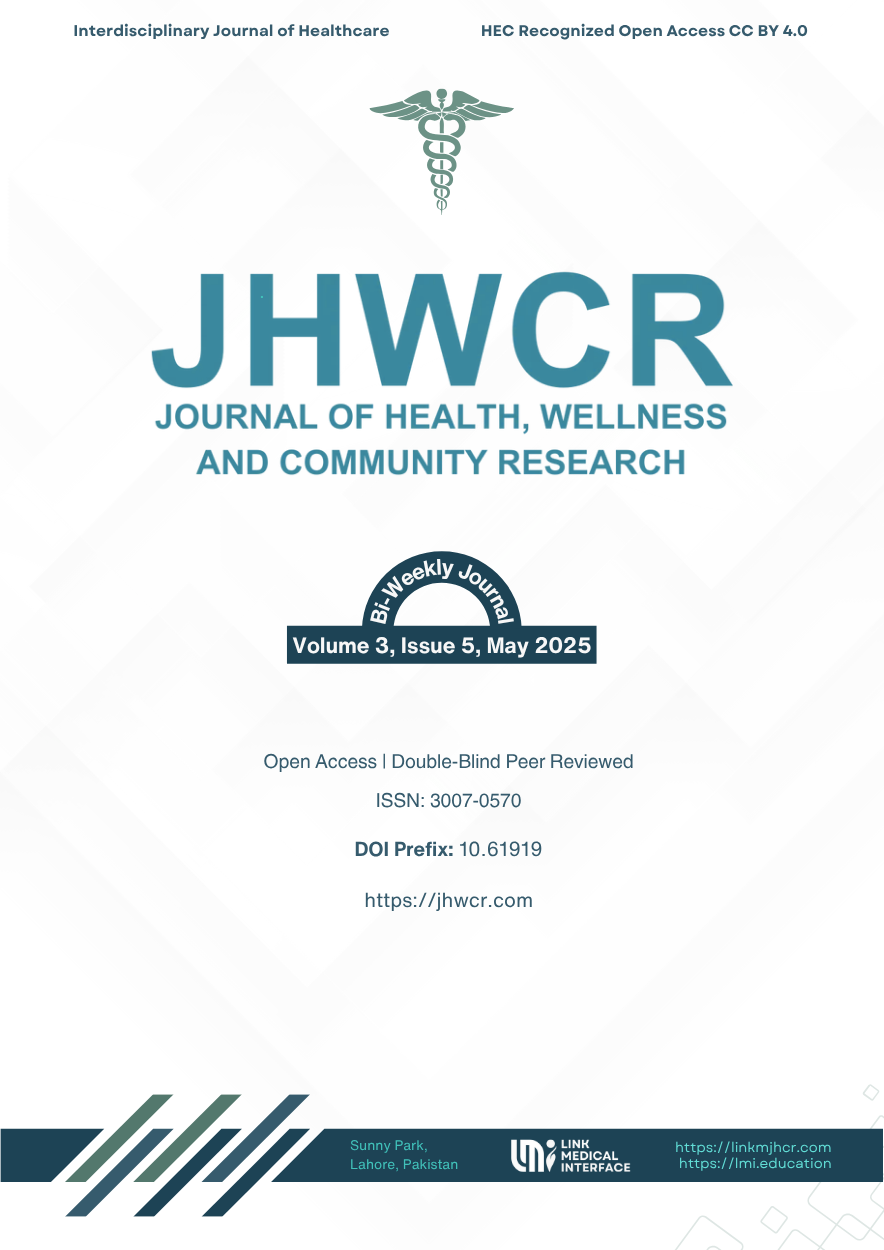Weight Trajectories After Hysterectomy and Their Links to Hormonal Symptoms: A Hospital-Based Survey from District Sialkot
DOI:
https://doi.org/10.61919/1wt99c04Keywords:
Hysterectomy, Osteoarthritis, Weight Gain, Menopause, Musculoskeletal Health, Women’s Health, Sialkot PakistanAbstract
Background: Osteoarthritis (OA) is a leading cause of chronic disability among women, with hormonal shifts and mechanical stress identified as major etiologic factors. Hysterectomy, by altering estrogen balance and promoting postoperative weight gain, may accelerate degenerative joint changes, yet population-level evidence from South Asia remains limited. Objective: To estimate the prevalence of OA among hysterectomized women in District Sialkot and identify independent predictors, particularly postoperative weight gain. Methods: A cross-sectional survey was conducted between March and September 2023 across three hospitals in District Sialkot. Thirty women aged 27–50 years who had undergone hysterectomy for benign indications were assessed through structured questionnaires and symptom-based OA screening, supplemented by imaging data where available. Weight change (Δkg) and categorical weight-gain groups (≤0, +1–4, +5–9, ≥10 kg) were evaluated alongside age, menopausal status, physical activity, and diet. OA prevalence with 95% confidence intervals (CIs) was calculated, and multivariable logistic regression identified predictors of OA. Results: OA was present in 63.3% (95% CI 44.9–81.8) of participants. Women gaining ≥10 kg post-surgery had significantly higher odds of OA (adjusted odds ratio [aOR] = 8.17, 95% CI 1.02–65.41, p = 0.048), independent of age (p = 0.041). Hormonal symptoms were less frequent among OA cases. Conclusion: Osteoarthritis is highly prevalent among hysterectomized women, with postoperative weight gain and age serving as key predictors. Integrating weight management, musculoskeletal screening, and lifestyle counseling into postoperative care may reduce OA risk and improve long-term outcomes.
Downloads
Published
Issue
Section
License
Copyright (c) 2025 Ghulam Fizza, Saima Ashraf, Aleza Bibi, Faiza Riyasat, Laiba Shabir, Asad Shabbir (Author)

This work is licensed under a Creative Commons Attribution 4.0 International License.


